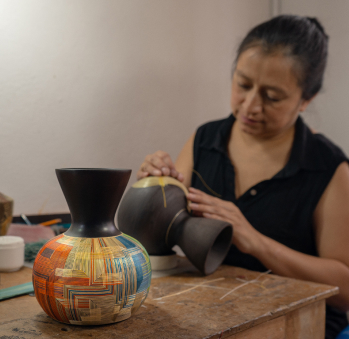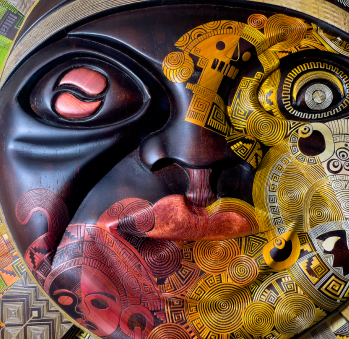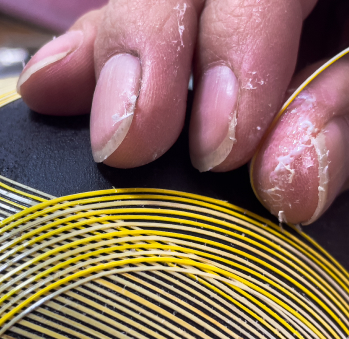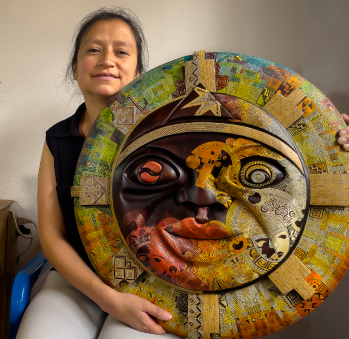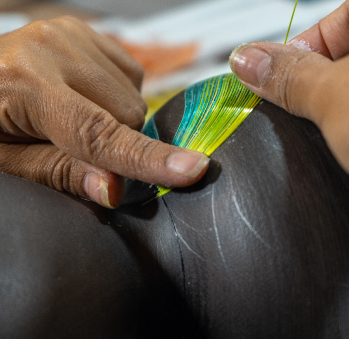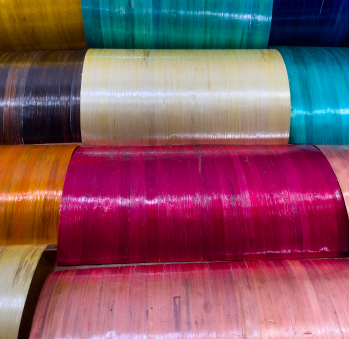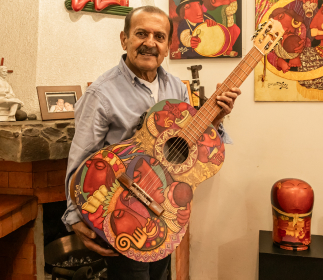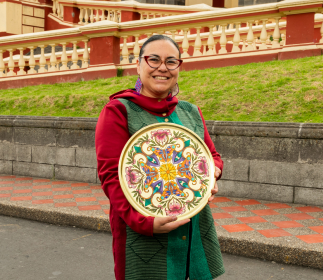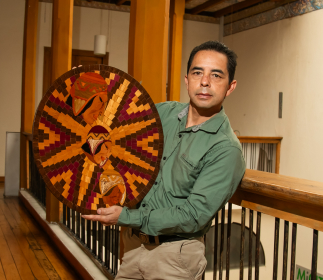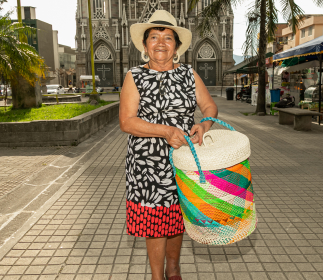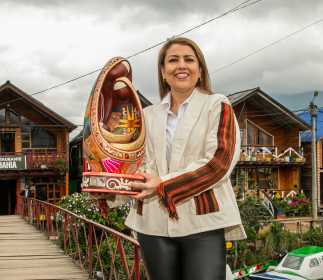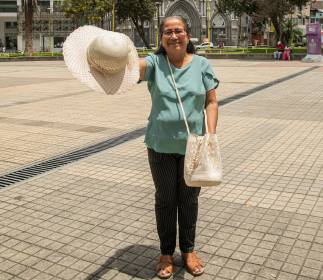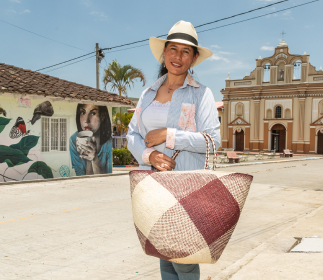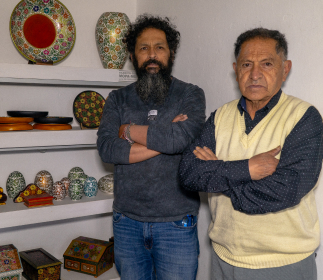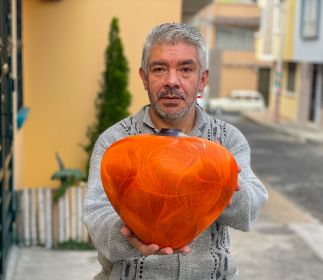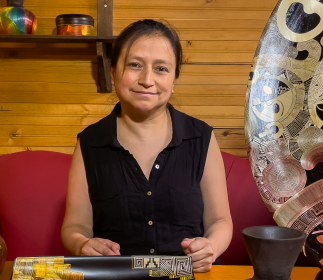Angélica Chiles
Workshop: Tamo de oro
Craft: Enchapado en tamo
Trail: Sandoná - Pasto Route
Location: Pasto, Nariño
There are circumstances in life that make us who we are. Angélica, for instance, developed incredible attention to detail. She noticed things that other people did not, like the ripple effect a drop of water causes when it falls in a puddle, the bright and changing colors the sun makes over the mountains and the sort of pure movement that the outlines of mountain ranges make.
Her innate curiosity got heightened because her father could not speak or hear. This made it so everyone in her family had to learn to communicate according to a code of gestures. All of them showed him their affection when they visited his workshop. When they were there, they touched everything; looked at every cube, nut, and screw; and took apart every trinket that could be disassembled. Angélica learned to speak with her eyes and with her hands. Everything she saw caused her to fantasize and imagine different worlds.
Thus, it is not strange for her to contemplate her region’s landscapes, to witness the colors of the Galeras volcano and how they differ from those of the Morasurco volcano. She adores Pasto, relishes in its natural environments, and is aware of the privilege that is to be able to witness such beauty. How could she not be awed by her surroundings if the Laguna de la Cocha is mere steps away from her, as are the unique mountains that border with the Putumayo department? Angélica’s skill at being observant is what has let her weaving reach the rank of refined craftsmanship.
Tamo comes from the chaff of barley, which was grown in extremely large quantities in the past to make beer. This fiber is used to decorate wooden wares: it is dried, dyed, delicately flattened into thin strips, and glued onto said wares in various shapes and patterns. It is a meticulous and detailed process that has been perfected over several years. She began learning the trade from great masters more than 25 years ago. She recalls that the designs of the pieces that were made at the time were quite simple and basic compared to the ones that are used nowadays.
Curious as she was, she always wanted to go a step further with her craft. When she was barely starting out, she noticed that the way in which fibers were arranged was very plain: the resulting patterns combined colors but did not give rise to elaborate designs. Over the years, the trade became more complex. The material, for instance, began being woven and crossed to produce reliefs and volume. It also started getting trimmed to depict more than simple landscapes. It was then employed to make human and pre-Columbian figures, as well as musical instruments and scenes that show the craftsmanship required to make these wares.
This is a craft in and of itself: both its brush and canvas are made from the same natural fiber. As a result, handling the material skillfully is the most influential factor in the finesse of the finishes. Angélica proved her ability beyond a shadow of a doubt when she started fashioning the vases that made her famous. Hers is a family business. After many years of experience working for other masters, she, her husband Franklin, and her sisters established the Tamo de Oro workshop. This is where they design their pieces: wares that unite the mestizo tradition that characterizes Pasto’s Carnaval de Negros y Blancos with the region’s indigenous ancestry.
Craft
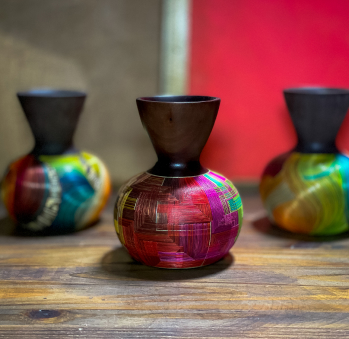

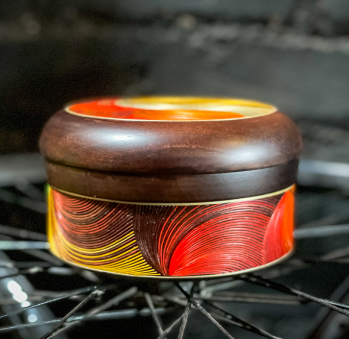
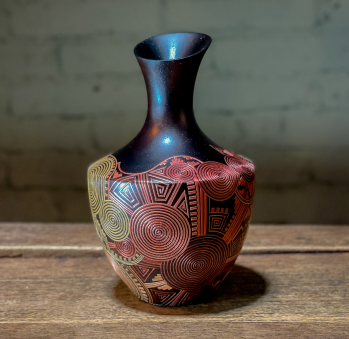




Artisans along the way
Artisans along the way
No puede copiar contenido de esta página








































